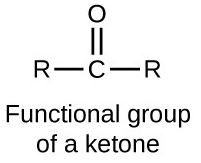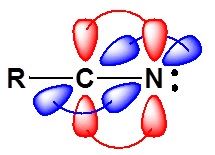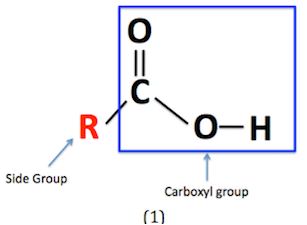
Organic Chemistry
9th Edition
ISBN: 9781305080485
Author: John E. McMurry
Publisher: Cengage Learning
expand_more
expand_more
format_list_bulleted
Concept explainers
Question
Chapter 3.SE, Problem 25AP
Interpretation Introduction
a)
Interpretation:
The hybridisation of the following molecules is to be shown with the help of diagram.
Concept introduction:
a)

Interpretation Introduction
b)
Interpretation:
The hybridisation of the following molecules is to be shown with the help of diagram.
Concept introduction:
b)

Interpretation Introduction
c)
Interpretation:
The hybridisation of the following molecules is to be shown with the help of diagram.
Concept introduction:
c)

Expert Solution & Answer
Trending nowThis is a popular solution!

Students have asked these similar questions
By giving an example for each of the molecules of Alkyl halide, Aldehyde, Ketone, Carboxylic Acid, Ester, Anhydride, Amit, you can also identify the bond types (sigma -pi) and hybridization types
Assume for the purposes of this problem that to be an alcohol (-ol) or an amine (-amine), the hydroxyl or amino group must be bonded to a tetrahedral (sp3 hybridized) carbon atom. Write the structural formula of a compound with an unbranched chain of four carbon atoms that is an:
Q. Alkenoic acid
Assume for the purposes of this problem that to be an alcohol (-ol) or an amine (-amine), the hydroxyl or amino group must be bonded to a tetrahedral (sp3 hybridized) carbon atom. Write the structural formula of a compound with an unbranched chain of four carbon atoms that is an:
Q. Alkenol
Chapter 3 Solutions
Organic Chemistry
Ch. 3.1 - Prob. 1PCh. 3.1 - Prob. 2PCh. 3.1 - Identify the functional groups in the following...Ch. 3.2 - Draw structures of the five isomers of C6H14.Ch. 3.2 - Propose structures that meet the following...Ch. 3.2 - Prob. 6PCh. 3.3 - Draw the eight 5-carbon alkyl groups (pentyl...Ch. 3.3 - Identify the carbon atoms in the following...Ch. 3.3 - Prob. 9PCh. 3.3 - Prob. 10P
Ch. 3.4 - Give IUPAC names for the following compounds:Ch. 3.4 - Prob. 12PCh. 3.4 - Name the eight 5-carbon alkyl groups you drew in...Ch. 3.4 - Give the IUPAC name for the following hydrocarbon,...Ch. 3.7 - Make a graph of potential energy versus angle of...Ch. 3.7 - Sight along the C2-C1 bond of 2-methylpropane...Ch. 3.7 - Sight along the C2-C3 bond of 2,3-dimethylbutane,...Ch. 3.7 - Draw a Newman projection along the C2-C3 bond of...Ch. 3.SE - Prob. 19VCCh. 3.SE - Prob. 20VCCh. 3.SE - Draw a Newman projection along the C2-C3 bond of...Ch. 3.SE - Prob. 22APCh. 3.SE - Prob. 23APCh. 3.SE - Propose structures for the following: (a) A...Ch. 3.SE - Prob. 25APCh. 3.SE - Draw the structures of the following molecules:...Ch. 3.SE - Draw structures that meet the following...Ch. 3.SE - Prob. 28APCh. 3.SE - In each of the following sets, which structures...Ch. 3.SE - There are seven constitutional isomers with the...Ch. 3.SE - Prob. 31APCh. 3.SE - Draw compounds that contain the following: (a) A...Ch. 3.SE - Prob. 33APCh. 3.SE - Draw and name all monochloro derivatives of...Ch. 3.SE - Draw structures for the following: (a)...Ch. 3.SE - Prob. 36APCh. 3.SE - Draw a compound that: (a) Has nine primary...Ch. 3.SE - Give IUPAC names for the following compounds:Ch. 3.SE - Name the five isomers of C6H14.Ch. 3.SE - Explain why each of the following names is...Ch. 3.SE - Prob. 41APCh. 3.SE - Consider 2-methylbutane (isopentane). Sighting...Ch. 3.SE - What are the relative energies of the three...Ch. 3.SE - Construct a qualitative potential-energy diagram...Ch. 3.SE - Prob. 45APCh. 3.SE - Draw the most stable conformation of pentane,...Ch. 3.SE - Draw the most stable conformation of...Ch. 3.SE - Prob. 48APCh. 3.SE - Prob. 49APCh. 3.SE - Formaldehyde, H2C=O, is known to all biologists...Ch. 3.SE - Prob. 51APCh. 3.SE - Increased substitution around a bond leads to...Ch. 3.SE - Prob. 53APCh. 3.SE - In the next chapter we'll look at...Ch. 3.SE - We’ll see in the next chapter that there are two...
Knowledge Booster
Learn more about
Need a deep-dive on the concept behind this application? Look no further. Learn more about this topic, chemistry and related others by exploring similar questions and additional content below.Similar questions
- Draw the line-bond structure of oleic acid (cis-9-octadecenoic acid), CH3(CH2)7CH=CH(CH2)7COOH, at physiological pH. You do not need to draw hydrogen atoms attached to carbon atoms.arrow_forwardDetermine the molecular geometry and polarity of hydroxylamine (NH2OH), formaldehyde (CH2O), and formaldoxime (H2CNOH). Justify your deductions. Is there a difference between reactants and products for both features?.arrow_forwardAssume for the purposes of this problem that to be an alcohol (-ol) or an amine (-amine), the hydroxyl or amino group must be bonded to a tetrahedral (sp3 hybridized) carbon atom. Write the structural formula of a compound with an unbranched chain of four carbon atoms that is an: Q. Alkenaminearrow_forward
- Assume for the purposes of this problem that to be an alcohol (-ol) or an amine (-amine), the hydroxyl or amino group must be bonded to a tetrahedral (sp3 hybridized) carbon atom. Write the structural formula of a compound with an unbranched chain of four carbon atoms that is an: Q.Alkanearrow_forwardAssume for the purposes of this problem that to be an alcohol (-ol) or an amine (-amine), the hydroxyl or amino group must be bonded to a tetrahedral (sp3 hybridized) carbon atom. Write the structural formula of a compound with an unbranched chain of four carbon atoms that is an: Q. Alkynonearrow_forwardThe biopolymer Chitin is the principal component of the exoskeleton of arthropods. The molecular shape of the oxygen atom indicated (X) is . The bond angles around the indicated carbon atom (Y) are approximately degrees. The indicated nitrogen atom (Z) is part of a/an functional group.arrow_forward
- Write the structural formula of a compound with an unbranched chain of five carbon atoms that is an alkane. You do not have to consider stereochemistry. Assume for the purposes of this problem that, to be an alcohol (-ol) or an amine (-amine), the hydroxyl or amino group must be bonded to a tetrahedral (sp3 hybridized) carbon atom. If more than one structure fits the description, draw them all. Ensure alkyne bonds are drawn linearly.arrow_forwardWhich of the groups and/or atoms in the following molecule are gauche to the hydroxyl (OH) group?arrow_forwardDraw the skeletal structure of the following compound: a. carboxylic acid with the molecular formula C4H8O2 b. an ester with molecular formula C4H802 c. a ketone with the molecular formula C4H8O2 d. an aldehyde with the molecular formula C4H8Oarrow_forward
- Describe the structure of the SP2 hybridized carbon atom. With the participation of which orbital can it form a π-bond with another sp2-hybridized carbon atom?arrow_forwardwhat is the term used to describe organic reactions in which each atom of a diatomic molecule is transferred to one of the carbons in a double bond?arrow_forwardExplain why acetic acid, CH3CO2H, Contains two distinct types of Carbon oxygen Bonds, Whereas the acetate ion, formed by loss of hydrogen ion from acetic acid, Only contains one type of carbon oxygen bondarrow_forward
arrow_back_ios
arrow_forward_ios
Recommended textbooks for you
 Chemistry & Chemical ReactivityChemistryISBN:9781337399074Author:John C. Kotz, Paul M. Treichel, John Townsend, David TreichelPublisher:Cengage Learning
Chemistry & Chemical ReactivityChemistryISBN:9781337399074Author:John C. Kotz, Paul M. Treichel, John Townsend, David TreichelPublisher:Cengage Learning Chemistry: Principles and ReactionsChemistryISBN:9781305079373Author:William L. Masterton, Cecile N. HurleyPublisher:Cengage Learning
Chemistry: Principles and ReactionsChemistryISBN:9781305079373Author:William L. Masterton, Cecile N. HurleyPublisher:Cengage Learning

Chemistry & Chemical Reactivity
Chemistry
ISBN:9781337399074
Author:John C. Kotz, Paul M. Treichel, John Townsend, David Treichel
Publisher:Cengage Learning

Chemistry: Principles and Reactions
Chemistry
ISBN:9781305079373
Author:William L. Masterton, Cecile N. Hurley
Publisher:Cengage Learning